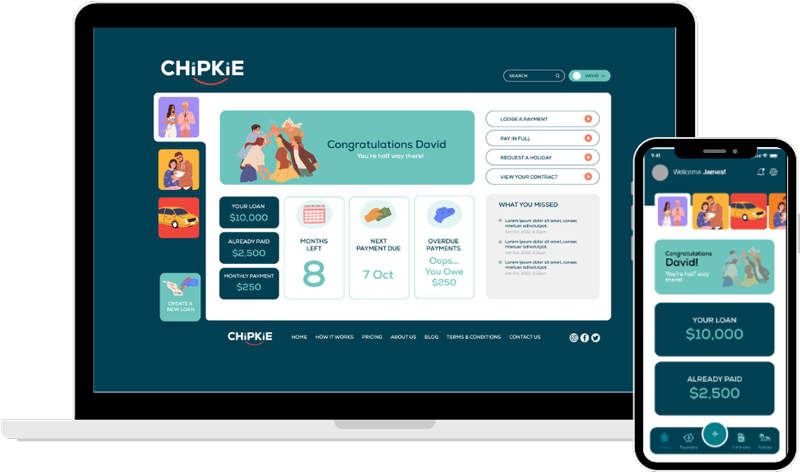The entrepreneurial spirit is thriving in Australia, but accessing initial capital is often the biggest hurdle. This is where parents and family members are uniquely positioned to step in, acting as the first round of investors or lenders. However, when you provide a family business loan to your children, you transition from ‘parent’ to ‘creditor.’ This high-value transaction carries specific legal and tax implications that are far more complex than a standard personal loan.
A properly structured family business loan protects the interests of the lender, the borrower, and the new business itself, ensuring compliance with the Australian Taxation Office (ATO) and creating a clear financial pathway for the venture. Without formal documentation, your investment could be treated as a risky personal gift, potentially jeopardizing tax deductibility and family harmony. Read our deep dive on the “Gift vs. Loan” Tax Trap here.
The Fundamental Difference: Business Loan vs. Personal Loan
While the money comes from the same source, the purpose of a family business loan changes its legal and tax character:
- Intent and Recourse: A personal loan is based on an individual’s income and assets. A business loan is based on the projected profitability and assets of the entity. The agreement must specify what assets (if any) of the business or the individual borrower are secured against the loan.
- Tax Implications: For the borrower (the child’s business), interest paid on the loan is potentially tax-deductible as a business expense. For the lender (the parent), the interest received is assessable income and must be declared. If the loan is interest-free, the ATO may scrutinise its commercial legitimacy, especially if the funds are used for a lucrative investment.
- Division 7A Risk: If the funds are lent through a family trust or private company (not just as an individual), you enter the territory of ATO Division 7A. This complex area aims to prevent unfranked dividends being disguised as loans. To avoid the loan being treated as a taxable dividend, the agreement must meet strict ATO criteria regarding minimum interest rates (the benchmark rate) and maximum terms (usually 7 years).
Structuring Your Family Business Loan for Legal Compliance
To ensure your family business loan is legally binding and tax-compliant, the written agreement must go beyond a simple IOU.
1. Identify the Correct Borrower Entity
This is the single most important step. You should not lend the money to your child personally if the funds are for the business. The borrower must be the registered legal entity:
- Pty Ltd Company: The company itself is the borrower.
- Trust: The trustee (often a Pty Ltd company) signs the agreement on behalf of the trust.
- Partnership: All individual partners sign the agreement.
Lending to the individual when the money is for the company muddies the waters for tax purposes and can make the loan difficult to enforce if the business fails.
2. Define the Loan Terms with Commercial Clarity
The agreement must clearly define the terms as if a bank were the lender:
- Principal Amount: The total amount of the loan.
- Interest Rate: State the rate clearly. If it’s zero, formally note that to avoid ambiguity, though this invites ATO scrutiny if the business is profitable. To be safest for tax purposes, charging the ATO’s benchmark interest rate is advisable.
- Repayment Schedule: Specify the date when repayments begin and the frequency (monthly, quarterly). Crucially, the agreement must also detail the Term (e.g., 5 years) and the Final Repayment Date.
- Security (Collateral): For larger loans, the parent may require security, such as a mortgage over a personal asset (if available) or a Personal Guarantee from the child. For early-stage startups, securing the business assets themselves (like equipment or intellectual property) may be an option, though more complex.
Protecting Against the Worst-Case Scenarios
The best family business loan agreement is one that anticipates failure, divorce, or death.
- Default and Recourse: What happens if the business fails to make repayments? The contract must explicitly outline the process: sending a formal demand, calling in the security (if applicable), and the right to pursue the full outstanding balance. Clear steps prevent emotional arguments during a business crisis.
- Co-Borrowers and Partners: If your child has a business partner or a spouse, consider adding them as a co-borrower or having them acknowledge the debt. In the event of a divorce, a formally documented business loan significantly reduces the risk of the Family Court treating the funds as an undocumented gift to the child. For more on navigating family financial support, see our comprehensive guide.
- Exit/Conversion Clause: For high-risk startups, the parent may want the option to convert the debt into equity (shares) if the business becomes successful. This should be explicitly detailed in the agreement to avoid future disputes over ownership stake.
A robust agreement is not about mistrust; it’s about providing the clear legal structure that a business needs to grow and thrive without the risk of destroying family ties if the venture hits a rough patch. It ensures all parties understand their obligations from day one, laying a foundation of professional conduct that benefits the business’s longevity.
Formalise Your Family Business Loan with Chipkie
Funding a family startup is an exciting investment in the next generation, but the complexity of a family business loan demands a professional approach. You need more than a generic template; you need a legally sound document that is enforceable, tax-aware, and keeps family harmony intact. Chipkie helps you formalise your family and friends loans by providing the security of a commercial agreement with the ease of a digital platform. Our service ensures safety, certainty, and transparency by generating clear, compliant loan contracts tailored for specific uses like business financing. With features like visual tracking of repayments, automated reminders, and a clear audit trail, Chipkie removes the awkwardness of mixing money and family, allowing you to focus on celebrating your child’s success while your investment is professionally secured.






